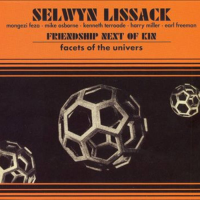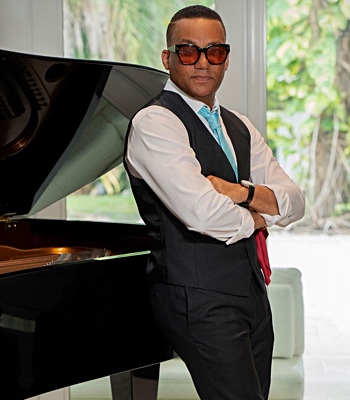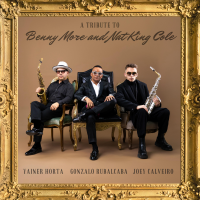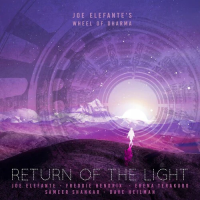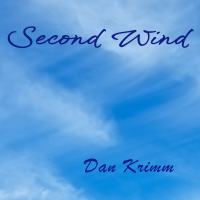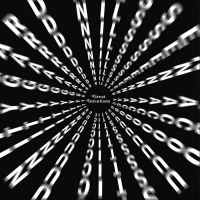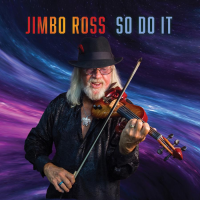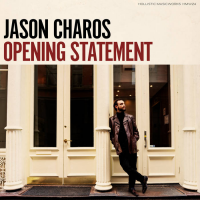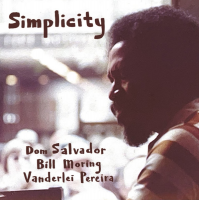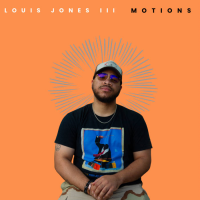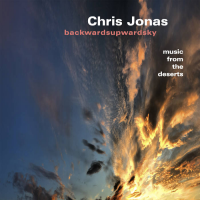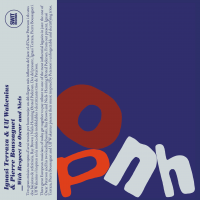Home » Jazz Articles » Multiple Reviews » Soft Machine: Third through Seven Remasters
Soft Machine: Third through Seven Remasters
Still, in its four-year run with the label, the group would gradually migrate from sometimes abstruse and experimental composition (that still left plenty of room for improvisation), through to a period straddling that and free jazz, and on to an ultimately more accessible, riff-heavy approach entrenched in the fusion camp.
With its constantly changing personnel, it seems that everyone has their favorite Soft Machine albums and line-ups. It's a shame that the group's perpetual state of flux has often polarized fans, because every album from the CBS period has its own character and appeal. By checking the albums out chronologically it becomes clear that Soft Machine was less about dramatic shift and more about the gradual change that took place as older members dropped out and new recruits brought their own stylistic ideas to the table.
While the albums released on CBS—beginning with 1970's Third and ending with 1973's Seven—have all been available on CD before, the sound quality has varied significantly. Some, like 1971's Fourth and 1972's Fifth, have been widely available in remastered form for a few years, and there has been a somewhat improved but pricey Japanese remaster of Third for those with deep pockets. But Sony's new reissue series is the first time all five albums have been remastered from the original master tapes. The results are as varied as what was on those original tapes, but the entire series is never less than as good, and in most cases is better, than previously available editions.
There's not exactly a bounty of bonus material. Still, Sony has expanded Thirdto a two-CD set, with the second disc taken from a 1970 live recording by the BBC at London's Royal Albert Hall, while Fifthfeatures a previously unreleased alternate take of "All White."
For those familiar with the group and dissatisfied with previous CD issues, this is a great time to reevaluate five albums that remain influential to this day. For those unfamiliar with Soft Machine it's a great opportunity to hear why the group, despite never achieving the popularity of North American jazz/rock groups of the time, has in many ways weathered better than their cousins on the west side of the Atlantic.
 Soft Machine
Soft MachineThird
Sony/BMG Music UK
2007 (1970)
Long considered one of the most innovative classics of jazz/rock of any era, Third was the first album to feature saxophonist Elton Dean, who passed away unexpectedly in 2006. Dean had already been making a name for himself in British free jazz circles with pianist Keith Tippett, joining Soft Machine as the group expanded from the trio of 1969's Volume Two to a short-lived septet that also included saxophonist/flautist Lyn Dobson, trumpeter Mark Charig and trombonist Nick Evans. It was a time when lines were being blurred and musical cross-pollination was the norm.
While Soft Machine the septet wouldn't last long for a number of reasons (not the least being financial), Dean would remain with keyboardist Mike Ratledge, bassist Hugh Hopper and drummer/vocalist Robert Wyatt. Sometimes the tension that exists between musicians with different priorities can result in a unique and exciting amalgam. Third, originally a two-LP set with each side sporting a single track approaching 20 minutes, features two compositions by Ratledge, one by Hopper and one by Wyatt. It's easy to hear the individual personalities in the writing. Still, while the writing may have been a little schizophrenic, the group sounded thoroughly cohesive.
Soft Machine had been experimenting with tape loops and other experimental methods of altering its sound for some time. Hopper's episodic "Facelift" opens the disc, a blending of two live performances with tape loops added after the fact. Hopper was always Soft Machine's most oblique writer, and "Facelift" combines some frightening passages of free improvisation with ominous grooves made all the more powerful by his huge-sounding fuzz-toned bass. It's the only example, in the group's original discography, of a short-lived quintet version with Dobson sharing the front line with Dean.
Ratledge's two contributions—"Slightly All The Time" (actually a medley that also incorporates Ratledge's "Backwards" and Hopper's "Noisette") and "Out-Bloody Rageous"—are no less challenging than "Facelift," but sports shifting time signatures and greater lyricism in their themes. Dean's tendencies mean there's no shortage of freewheeling abandon during his solo on "Slightly," which added Evans and flautist/bass clarinetist Jimmy Hastings to the mix. But Dean was equally capable of focus and construction, with this solo one of his best on the disc.
"Out-Bloody-Rageous" closes the disc, opening with a Terry Riley-inspired layered organ intro. It builds into an irregular-metered theme that generates the album's greatest heat and Ratledge's best solo, featuring his signature fuzz-driven Lowry organ. The tune ends more atmospherically, with Dean soloing over a repetitive bass pattern and Ratledge's wah-wah organ washes.
Sandwiched between the Ratledge tracks is Wyatt's "Moon In June," a 19-minute tour-de-force for the drummer that would be his last vocal feature with the group. The first half of the tune is all Wyatt, heard on drums, organ, electric piano and bass, supporting a stream-of-consciousness lyric that, as other versions of this tune would tell, varied from performance to performance. The rest of the band comes in for the song's instrumental second half. But while Wyatt was still interested in songwriting, there's nothing conventional about this piece, which remains a landmark in evolutionary songwriting complexity.
The bonus live CD that accompanies the Sony remaster features "Out-Bloody-Rageous," "Facelift," and a medley from Volume Two—pieces that were all standard parts of the Soft Machine repertoire at the time. As other archival live recordings released by Cuneiform and Voiceprint demonstrate, Soft Machine in performance was an unabashedly improvising band, playing long sets where the songs varied greatly from night to night, as did the set order and how they segued from one tune to the next.
Of all the CBS-era Soft Machine releases, Third is the one that's most needed a sonic upgrade. The shortcomings of what went to tape inherently limit how much better this remaster sounds. However, while the difference isn't dramatic, it's warmer, more spatial and rich. While it's not likely that Third will ever sounds pristine or crystal-clear, this is unequivocally the best it's ever sounded. Often considered on a par with Miles Davis' 1969 album Bitches Brew, it came from a different place but was just as innovative.
 Soft Machine
Soft MachineFourth
Sony/BMG Music UK
2007 (1971)
Cutting back to a single album, Fourth is Hopper's greatest contribution to Soft Machine's legacy. All but two tunes, including the four-part "Virtually," are written by the bassist, with only the nine-minute "Teeth" written by Ratledge, and Dean making his compositional debut with the shorter "Fletcher's Blemish." It's the only album which, guest musicians aside, retained a line-up identical to its predecessor. Consequently it's an album about collective growth rather than changes instigated by personnel shifts. It's also about evolving interplay and, despite even greater directional fragmentation, is another remarkable and cohesive effort.
That's not to say there wasn't trouble brewing. Wyatt was becoming increasingly disenchanted by the rest of the group's refusal to play his vocal material, leaving the band soon after Fourth's release. Wyatt would ultimately suffer an accident that would leave him paralyzed from the waist down and unable to play the kit (though that in no way signaled the end of this resilient artist). Hearing his performance on Fourth, more's the pity.
Ratledge's "Teeth" opens the album, and it's his most compelling yet challenging writing on any Soft Machine album. Just because a group doesn't align itself with conventional jazz tradition doesn't mean it lacks the knowledge. With Roy Babbington guesting on contrabass (he'd join the group before long), it's the closest Soft Machine ever come to truly swinging. Ratledge and Wyatt connect beautifully beneath Dean's wonderfully constructed solo, making one wish the drummer hadn't been so at odds with the rest of the band. Then again, it's that very tension that makes so much of Fourth as different—but equally exciting—an experience as Third.
Dean's "Fletcher's Blemish" revolves around cued passages that are linked by completely free improvisation. With Hopper's fuzz bass, Ratledge's jagged chords and Wyatt's tumultuous playing, it's an extension of Dean's first solo album, the verging-on-anarchistic Just Us (CBS, 1971; reissued Cuneiform, 1998).
For the rest of Fourth Hopper delivers a mix of material that ranges from the brooding "Kings And Queens" (a tune he's continued to play with subsequent Softs-related projects including Soft Machine Legacy and Soft Bounds). As with Third, there are guests who augment the group, and on Hopper's "Virtually" suite they're used to create more texturally rich themes but also for some collective improvisations that find Fourth-era Soft Machine more equitably straddling the line between form and freedom.
Hopper and Dean are the two Softs alumni who would continue to work together after leaving the group (right up to Dean's death, in fact), and it's no surprise. Hopper may have a stronger allegiance to form and groove, but his skewed patterns and edgier themes contrast with Ratledge's more accessible sounding (though no less challenging) writing. Hopper would also continue to work with tape looping here and through to the end of his time with Soft Machine, experiments that would come to full fruition on his first solo album, 1984 (CBS, 1973; reissued Cuneiform, 1998) and would continue on to this day.
Fourthwas the best-recorded album of the CBS-era, and the 1999 remastered two-fer that placed it on one CD with Fifth was the best version available of both albums. While clarity was not an issue there was a certain brittleness to the 1999 version, something that's been corrected by Sony here, with an overall warmer sound.
 Soft Machine
Soft MachineFifth
Sony/BMG Music UK
2007 (1972)
With Wyatt gone, Fifthrepresents a transitional album, and one that would ultimately have a significant impact on what was to come. Faced with finding a new drummer, and with Dean's free jazz leanings taking greater precedence, the saxophonist would bring in Australian Phil Howard, a member of Dean's Just Us group. Based on the first three tracks from Fifth, Howard may have leaned towards greater freedom, but on these Ratledge and Hopper compositions he was by no means incapable of handling groove, especially on Ratledge's modal 7/4 tune, "All White."
What Fifth represents for Ratledge the writer is a move towards simpler and less episodic writing. It's also the first time he began using a Fender Rhodes electric piano, which altered the complexion of the band considerably. The twin-piano intro to Ratledge's equally modal "Drop" is also the first time Dean is heard on the instrument with Soft Machine, though he'd played it throughout Just Us. When "Drop" kicks into a solo section for Ratledge's distorted organ it provides for a broader texture that not only works well here, but would become a regular convention with the band until Ratledge left the group following 1975's Bundles.
But once again there was trouble brewing. While Howard's more flamboyant Tony Williams- style drumming was, if not an improvement over Wyatt, certainly a change that pushed Soft Machine further away from rock and closer to jazz, Ratledge and Hopper weren't completely happy, and fired Howard. Upset at the dismissal of Howard, Dean would finish the recording of Fifth with new drummer John Marshall—a versatile and powerful player who'd become known in jazz/rock circles for his work with trumpeter Ian Carr's group Nucleus—and tour with the group until leaving in mid 1972.
Marshall may have been a more versatile drummer, but his playing on the beginning of the second half of Fifth would show surprising restraint, in particular on Ratledge's mysterious "As If," which would also feature another contrabass guest spot by Babbington.
a curiously idiosyncratic coda to "As If" would, however, lead into a short drum solo from Marshall, where a more centered rhythmic disposition would become evident. His penchant for strong groove would become even clearer on Ratledge's "Pigling Bland" which, despite metric shifts, was Ratledge's most accessible composition since the band's pre-CBS days and demonstrated that while Dean favored free jazz, he was still capable of his own sense of lyricism. "Pigling Bland" would be a harbinger of things to come, despite Fifth's closing with Dean's atmospheric and pedal-tone based "Bone," a track where Marshall demonstrated a surprisingly textural approach.
as with Fourth, the sound is subtly improved upon the 1999 reissue. None of the Sony reissues represent dramatic change, but the overall impression is of a richer, more expansive sound, and improved clarity that varies dependent upon what was on those original master tapes. Fifth also features an alternate take of "All White" that begins with a drum solo from Howard which, when compared to Marshall's solo "L.B.O.," more specifically differentiates the styles of the two drummers.
With Dean leaving the band after Fifth, Soft Machine was about to recruit a new player who would not only shift the direction of the group, but whose presence would result in another exit— curiously, by the very person who recruited him.
 Soft Machine
Soft MachineSix
Sony/BMG Music UK
2007 (1973)
With Dean gone, Hopper brought Karl Jenkins into the fold. Jenkins, a multi- instrumentalist on oboe, keyboards, baritone and soprano saxophones, first caught the ear of the jazz/rock community along with Marshall in Nucleus. More than just a versatile player, Jenkins was also a prolific writer, writing the majority of Nucleus' first two albums despite Carr being its de facto leader. But while Jenkins was comfortable working with all kinds of shifting meters, there was a stylistic sameness about much of his writing. Much of it centered around convoluted riffs, over which he would overlay long, winding melodies.
It was a move away from the more changes-based writing heard with earlier Softs, and one that began a polarization of the group's fan base. Less idiosyncratic and more purely groove-centric, there was still ample opportunity for soloing, but in a less openly interactive context (although Marshall's keen ear would make sure that interplay didn't entirely disappear). Still, Hopper soon realized that this shift away from his own more obscure interests was causing him to lose interest in the band, and so he left three months after the release of Six.
Like Third, Six was a double- LP, but the approach was different. The first album was from a live performance that, were it not for the need to flip the album over, would have been a continuous set—a characteristic of Soft Machine from its earliest days. The second disc was a studio album consisting of two tunes by Ratledge, one by Jenkins, and a swan song for Hopper that was a preview of what to expect on 1984, which was ready for release.
The playing on the live set is never short of inspired, with Marshall stepping up as a powerfully propulsive drummer on Ratledge's temporally challenged "37½" and the surprisingly funky "Gesolreut." But even Ratledge seemed to be drawn towards simpler forms, where solos took place over extended vamps. Hopper can groove in his sleep, so there's never less than complete commitment. But the Soft Machine of Six was a significantly altered beast to that responsible for the earlier CBS discs.
The studio tracks are even more revealing. Jenkins' "The Soft Weed Factor" is based around repeated and layered electric piano phrases that seemed to take their inspiration from Steve Reich's brand of minimalism. Hopper and Marshall, when they enter, carry a languid and laconic groove, with a theme constructed of long tones appearing here and there. Atmospheric? Yes; hypnotic, even, and a device the group would carry forward toSeven. But it was a completely composed piece with not a single trace of improvisation.
Ratledge's "Stanley Stamps Gibbon Album" is the most propulsive of the studio tracks, with a characteristically jagged organ solo. His "Chloe And The Pirates" looks back at the group's more experimental sonic experiments, but is again less edgy than what came before, resolving into a gentle groove for Jenkins' oboe solo before returning to the more studio-constructed intro. Hopper's "1983" is a dark mix of in-tandem improvisation, electronics and ominous themes that, if anything, demonstrate just how far away from earlier Softs this incarnation had strayed.
While earlier CD issues of Six weren't lacking in clarity, the sound was always thin. Here Sony, once again, warms up the sound, and makes the groove-centric music more physical.
 Soft Machine
Soft MachineSeven
Sony/BMG Music UK
2007 (1973)
With Hopper's departure, and Ratledge leaving more and more of the writing duties to Jenkins, Seven is an album that, were it not for the gradual evolution towards it, might not even sound like a Soft Machine album. Another transitional album, it continued to expand on Jenkins' riff-based writing that wasn't without its own set of challenges, but was not powerful enough to succeed the way the group's next disc, 1975's Bundles, would with the addition of guitar legend in-the-making Allan Holdsworth and an even rockier fusion stance.
Still, there are plenty of memorable moments and, again, Sony upgrades the sound to make it a more enjoyable listen. With Roy Babbington now in the band full-time, and playing a revolutionary (at the time) six-string electric bass, he was a better choice for this version of Soft Machine than Hopper. Babbington didn't have a problem with repetitive riffing; though he was accomplished enough to keep the music from sounding mechanical through almost imperceptible nuances more felt than heard.
Marshall continued to become increasingly assertive, as he would with future records, but never at the expense of forward motion. Ratledge introduced synthesizer to the band for the first time—a considerable sign of discretion when all around him other keyboardists were buying as many synths as their stage setup could handle.
There are some memorable tunes on Seven, in particular Jenkins' lovely ballad "Carol Ann," featuring a beautiful synth solo from Ratledge. Ratledge's "Day's Eye" seems lifted from guitarist John McLaughlin's "Follow Your Heart," leading into the joining piece "Bone Fire" that segues into the plodding, riff-based and Jenkins-ish "Tarabos." Clearly Ratledge was moving in a different direction himself, and it may be unfair for fans of earlier Soft Machine line-ups to place all the blame on Jenkins for a group that was moving more towards flat-out fusion, since there was no sign of tension or divisiveness on Ratledge's part.
"Snodland" and "Penny Hitch" revisit "The Soft Weed Factor" territory. "Down The Road" is notable for the only appearance of Babbington on bowed contrabass, while Ratledge's "The German Lesson" and Jenkins' "The French Lesson" are two brief and interrelated tracks it's hard to tell the difference between.
It may be hard to believe the group that released Thirdwas the same one who would deliver the transitional Sevenfour years later. Still, listening to all five releases chronologically one can't help but see a clear line that flowed through the changing line-ups. If you can listen to each record for what it is instead of what you think it should be, then you'll find charting the evolution of Soft Machine through this four-year period a rewarding experience.
Some releases may resonate more than others, but one thing is certain: Soft Machine was a seminal group whose importance continues to be felt to this day, and Sony's long overdue remastered reissues of Third through Seven suggest that the best groups are those that evolve, rather than standing still and continuing to rehash the same concept again and again.
Personnel and Track Listings
Third
Personnel: Mike Ratledge: organ, piano, electric piano; Hugh Hopper: bass: Elton Dean: alto saxophone, saxello; Robert Wyatt: drums, vocals (CD1/3, CD/3), organ (CD1/3), electric piano (CD1/3), bass (CD1/3). With Lyn Dobson: flute and soprano saxophone (CD1/1); Nick Evans: trombone (CD1/2); Jimmy Hastings: flute and bass clarinet (CD1/2); Rab Spall: violin (CD1/3).
Tracks: CD1: Facelift; Slightly All The Time; Moon In June; Out-Bloody-Rageous. CD2 (BBC live session from Royal Albert Hall): Out-Bloody-Rageous; Facelift; Esther's Nosejob: Pig; Orange Skin Food; A Door Opens A Door Closes; Pigling Bland; 10:30 Returns To The Bedroom.
Fourth
Personnel: Mike Ratledge: organ, piano, electric piano; Hugh Hopper: bass; Elton Dean: alto saxophone, saxello; Robert Wyatt: drums. With Roy Babbington: contrabass (1, 3, 4, 6); Mark Charig: trumpet (2-4); Nick Evans: trombone (1, 2, 4); Jimmy Hastings: flute (6), bass clarinet (1, 6); Alan Skidmore: tenor saxophone (1, 6).
Tracks: Teeth; Kings And Queens; Fletcher's Blemish; Virtually Part 1; Virtually Part 2; Virtually Part 3; Virtually Part 4.
Fifth
Personnel: Mike Ratledge: organ, piano, electric piano; Hugh Hopper: bass; Elton Dean: alto saxophone, saxello, electric piano (2), recorder (7); Phil Howard: drums (1-3, 8); John Marshall: drums (4-6). With Roy Babbington: contrabass (4).
Tracks: All White; Drop' M.C.; As If; L.B.O.; Pigling Bland; Bone; All White (bonus alternate take).
Six
Personnel: Mike Ratledge: organ, electric piano, piano, celeste; Hugh Hopper: bass, effects; Karl Jenkins: oboe, baritone saxophone, soprano saxophone, electric piano, piano, celeste; John Marshall: drums, percussion.
Tracks: Fanfare; All White; Between; Riff; 37½; Gesolreut; E.P.V.; Lefty; Stumble; 5 From 13; Riff II; The Soft Weed Factor; Stanley Stamps Gibbon Album; Chloe And The Pirates; 1983.
Seven
Personnel: Mike Ratledge: organ, electric piano, synthesizer; Karl Jenkins: electric piano, oboe, baritone saxophone, soprano saxophone, recorder; Roy Babbington: bass, contrabasse (10); John Marshall: drums, percussion.
Tracks: Nettle Bed; Carol Ann; Day's Eye; Bone Fire; Tarabos; D.I.S.; Snodland; Penny Hitch; Block; Down The Road; The German Lesson; The French Lesson.
Tags
About Soft Machine
Instrument: Band / ensemble / orchestra
PREVIOUS / NEXT
Support All About Jazz
 All About Jazz has been a pillar of jazz since 1995, championing it as an art form and, more importantly, supporting the musicians who make it. Our enduring commitment has made "AAJ" one of the most culturally important websites of its kind, read by hundreds of thousands of fans, musicians and industry figures every month.
All About Jazz has been a pillar of jazz since 1995, championing it as an art form and, more importantly, supporting the musicians who make it. Our enduring commitment has made "AAJ" one of the most culturally important websites of its kind, read by hundreds of thousands of fans, musicians and industry figures every month.



